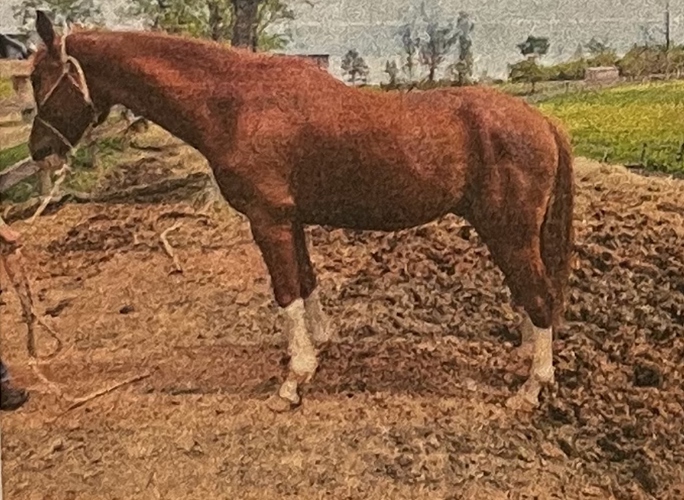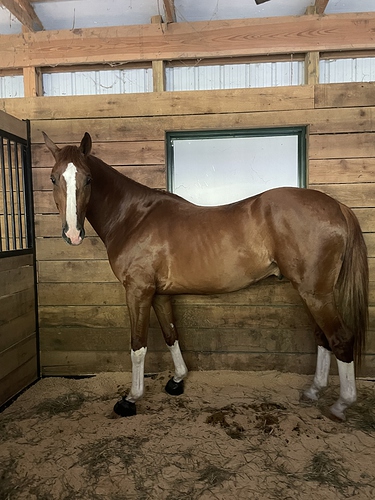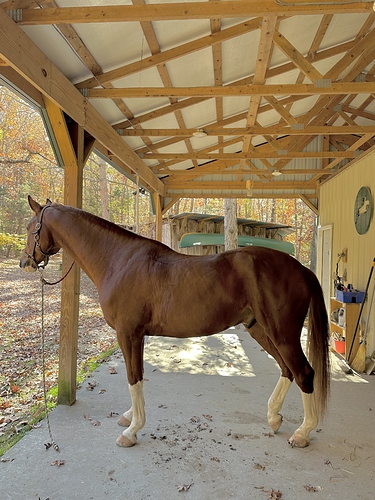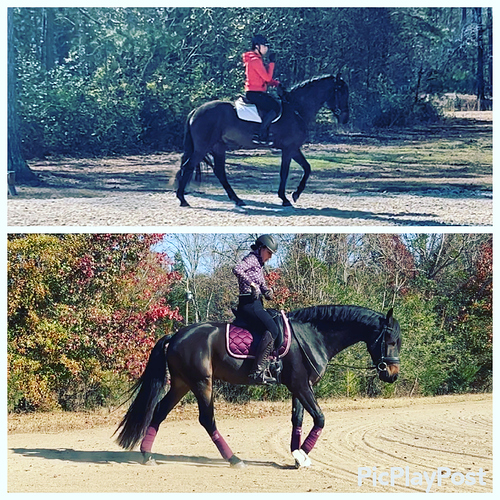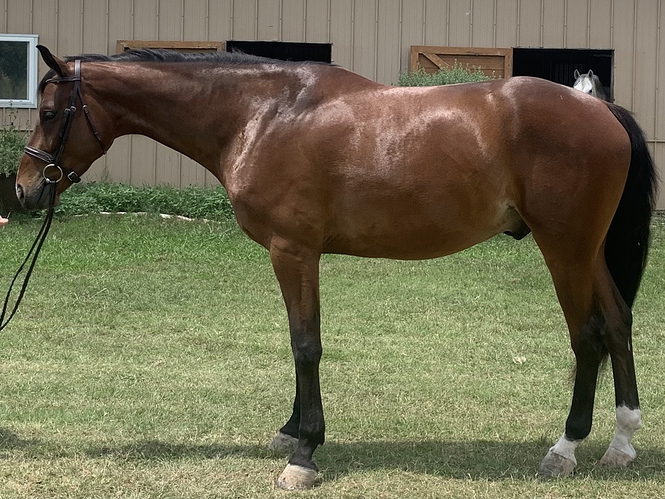Nutrition, time, slow, steady and varied work bring huge changes! ETA pics at ages 5, 6 and 7
Find a long, gentle hill (1/2 to 1 mile if possible) and march up it multiple times per week for a few weeks, then start to jog. A nice slow, butt-burning jog, head and neck out and down. Another month of that and your horse is going to look very different.
Saves their legs (lungeing), requires no special skills or equipment (long lining, cavaletti) and gets baby out and about. They’ll get fitter and stronger in all the right places (brain and body)
About 10 months of growing and dressage work between pics, 5 year old year. He had a thick neck but he’s 3/4 friesian and it was muscled on the underside from going around head high and being high set anyways. When the lightbulb switched on to understanding contact and using his back and whole body, it was just a few months to this.
So enjoying the pictures of all your lovely horses! Thank you for sharing them and your helpful advice.
Not everybody has hills or access to open country with varied terrain. We need to develop a plan with what we have available and give it time, consistent work and proper nutrition to get results. Most of what has been suggested here will work with time, consistency and nutrition.
Assuming the horse has the conformation to support it, of course.
I think this can be qualified a bit.
The subject is “developing a topline on the maybe not so genetically inclined?”
The answer is - 100% it can be done.
The qualification is - what does it look like when it’s “done”?
And that’s why we need pictures 
See photo below - this was the sweet spot! A month after we got his comfort issues resolved and a month before his injury
Yay! So you’ve got pretty decent conformation to work with. That pic shows a need for muscle develpment and a bit of fat loss, but understandable given the situation. You have a good foundation to work with.
Now, it’s a matter of doing all the above - hoof balance, saddle fit, quality and quantity of work, quality of diet, and the hardest to handle - time
How old in this pic? Still looks somewhat immature which in the world of warmbloods means you also need some growth to happen to help.
Pic was at the beginning of June. He went on stall rest early July
No I mean how old is the horse?
Ahhh - just 6 in that one
I expect he’ll fill up as he matures. Handsome dude!
My horse’s physique developed a lot between 6 and 8 without any “extra” from me
Yeah he should have some more maturing to do. In my pics, top is when he just turned 5, bottom one is 6 1/2. And that was just a couple months ago and he’s been growing this whole winter.
Lovely horse. You mentioned he’s 3/4 friesian, what’s the remaining 1/4?
Warmblood of some kind, but I’ve been unable to trace the granddam’s breeding. He’s an absolute gem, lovely mover, the BEST brain, and is such a character.
Check out Jec Ballou’s “55 Corrective Exercises for Horses” and “Equine Fitness: A Program of Exercises and Routines for Horses.” She is also the author of “101 Dressage Exercises.” These are great groundwork and under saddle exercises to build topline. She also has a website.
Sounds like 1/4 amazing.
Can only hope my youngster turns out as well as the horses in this thread.
Equestrian Masterclass just launched a course about this exact thing with Ansley Bevan:
Most of what she talks about is in hand work - I actually spoke with her on the phone about my own horse and she’s pretty adamant that if you want to see faster and better results, you need to stop riding your horse for 6-8 weeks so they can get their biomechanics and strength under control without needing to carry a rider, and then once that’s done, adding the rider back in will be MUCH easier with more l long term benefits.

